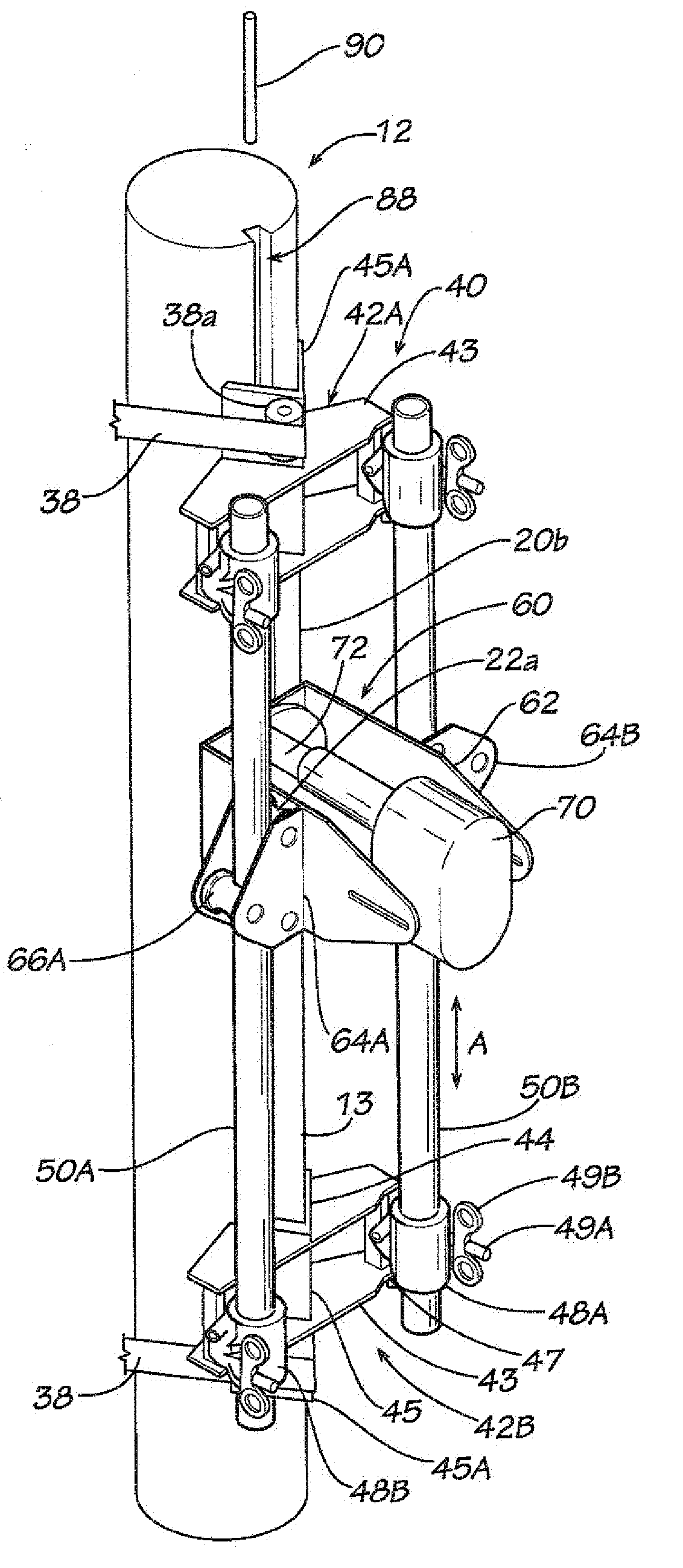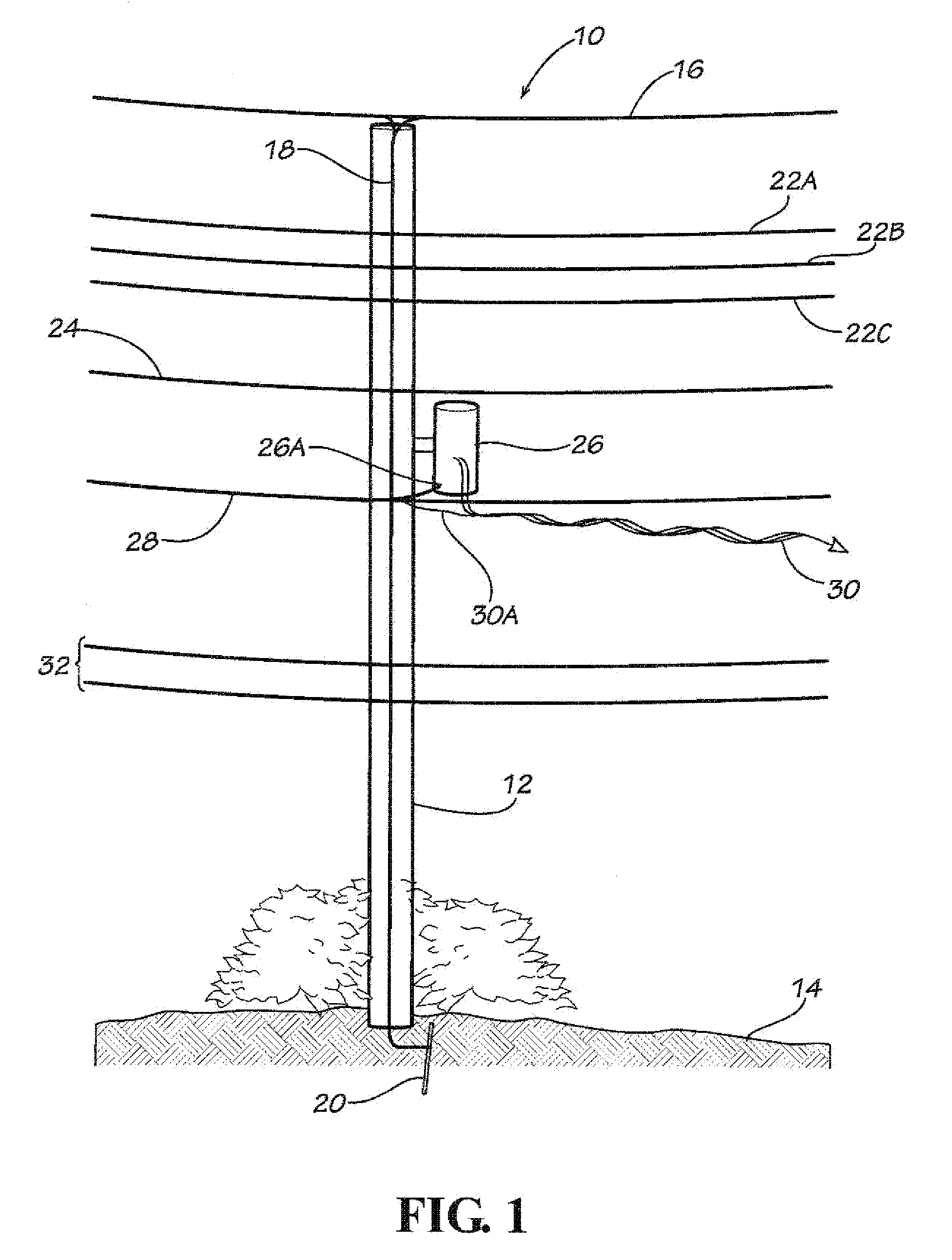Utility Pole Grounding Wire Replacement with an Embedment Method and Device
a technology for grounding wires and poles, applied in the manufacture of wooden sticks, electric cable installations, chemical debarking, etc., can solve the problem of grounding wires that are not visible or accessible on the outside of the poles
- Summary
- Abstract
- Description
- Claims
- Application Information
AI Technical Summary
Benefits of technology
Problems solved by technology
Method used
Image
Examples
Embodiment Construction
)
[0015]With reference to FIG. 1, a utility pole 10 is shown. The utility pole 10 for purposes of this application is a wood pole 12 (or other composite allowing mechanical working of the outer surface). The utility pole 10 generally ranges from twenty to one-hundred feet tall with thirty-five feet being a more common pole height. In a normal case the utility poles 10 are buried about six feet deep into the earth's crust 14 and are spaced consecutively, by way of example, about 125 feet apart.
[0016]By way of example, a common utility pole 10 may include all or portions of the following. A static wire 16 extends across the top of the utility pole 10 to bleed lightning surges off the power lines during a storm. A grounding wire (conductor) 18 is connected to the static wire 16 and to a grounding rod 20. The grounding wire 18 runs the entire length of the wood pole 12. Transmission lines 22a, 22b, 22c carry high voltage electricity (69-500 kilovolts) in three phases to substations (not ...
PUM
 Login to View More
Login to View More Abstract
Description
Claims
Application Information
 Login to View More
Login to View More - R&D
- Intellectual Property
- Life Sciences
- Materials
- Tech Scout
- Unparalleled Data Quality
- Higher Quality Content
- 60% Fewer Hallucinations
Browse by: Latest US Patents, China's latest patents, Technical Efficacy Thesaurus, Application Domain, Technology Topic, Popular Technical Reports.
© 2025 PatSnap. All rights reserved.Legal|Privacy policy|Modern Slavery Act Transparency Statement|Sitemap|About US| Contact US: help@patsnap.com



